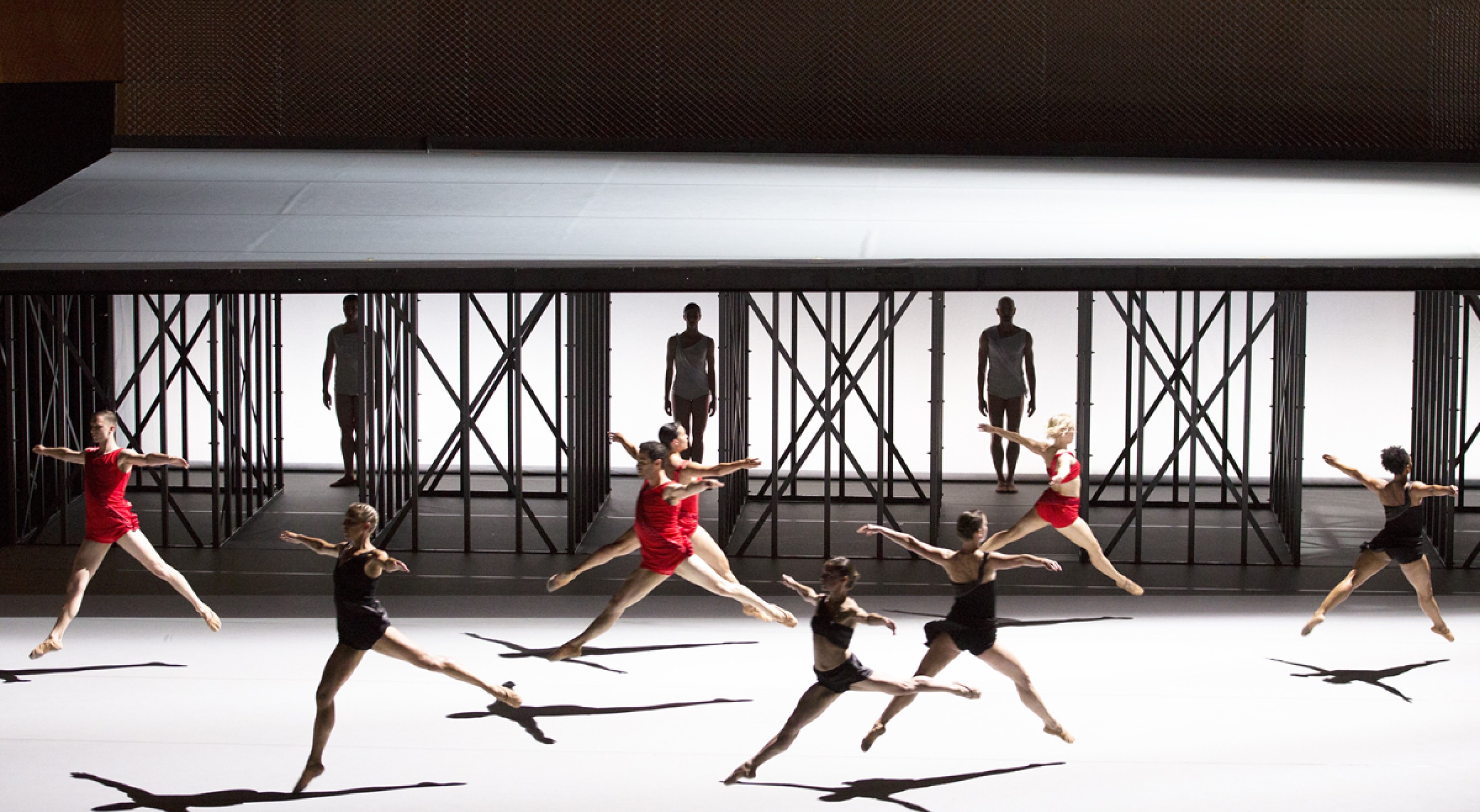John Adams Lucinda Childs Frank Gehry
AVAILABLE LIGHT
octoberoct 4 – 7
Choreography, Lucinda Childs
Music, John Adams
Stage design, Frank Gehry
Lighting design, Beverly Emmons and John Torres
Costume design, Kasia Walicka Maimone
Sound design, Mark Grey
With The Lucinda Childs Dance Company : Katie Dorn, Kate Fisher, Sarah Hillmon, Anne Lewis, Vincent McCloskey, Sharon Milanese, Benny Olk, Patrick John O’ Neill, Matt Pardo, Lonnie Poupard Jr., Caitlin Scranton, Shakirah Stewart
Associate producers, Kaleb Kilkenny, Alisa E. Regas
Executive producer, Linda Brumbach
A Pomegranate Arts production // In association with Théâtre de la Ville-Paris ; Théâtre du Châtelet (Paris) ; Festival d’Automne à Paris // A Cal Performances, University of California (Berkeley) coproduction ; Festspielhaus St. Pölten ; FringeArts (Philadelphie) With support from The Pew Center for Arts and Heritage, Glorya Kaufman Presents Dance at the Music Center and The Los Angeles Philharmonic Association, International Summer Festival Kampnagel (Hamburg), Onassis Cultural Centre (Athens), Tanz im August (Berlin), Théâtre de la Ville-Paris, Festival d’Automne à Paris // In the framework of the Tandem Paris-New York 2016 // First performed at MASS MoCa (Massachusetts Museum of Contemporary Art)
In partnership with France Inter
What is the “available light” that the piece’s title evokes? Firstly, it is that of the disused warehouse where its was created in 1983, and the effect of the light flooding. But it might just as well be the manifesto for the work’s limpidity, in which all is visible from within a formal clarity that never goes beyond the scope of the moving bodies. An open form of dance ensues, making use of all the resources of movement in order to reach a harmonious state of fusion between the arts. Indeed, the transparency of the effects maps out the different elements involved. To begin with, the stage design of the architect Frank Gehry sets out to multiply the different levels on which the dance works. Through this materialization in the space of several readings for the piece, the rigour of the counterpoints is accentuated, creating the impression that the dancers interact in a quantum-like manner with each other, their movements subjected to invisible laws of physics. Added to that, the symphonic composition by John Adams, Light Over Water, is like an incessant, unerring sound-wave, which envelops the moving bodies and transmits its pulsations to them. From amongst the eleven dancers a beating presence establishes itself, a flow of voltes, gyrations and immobility, distributed across the twin levels of the stage. The audience is confronted with pure, gesticulatory forms - cogs in a superior, mathematical harmony. The silhouettes of the dancers activate a living machinery of sounds, lights, and volumes - like a modern cathedral.
